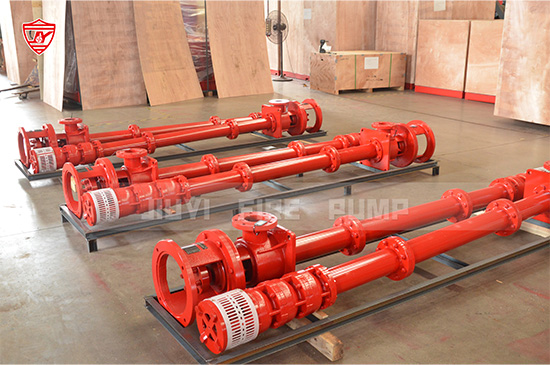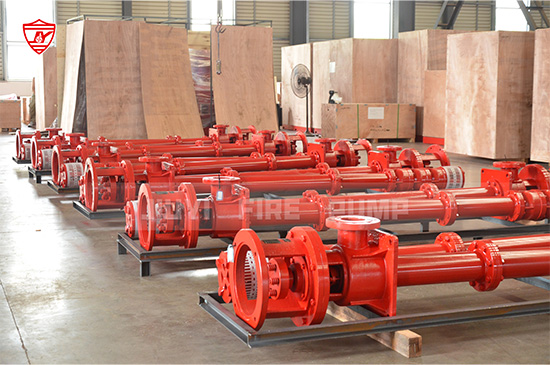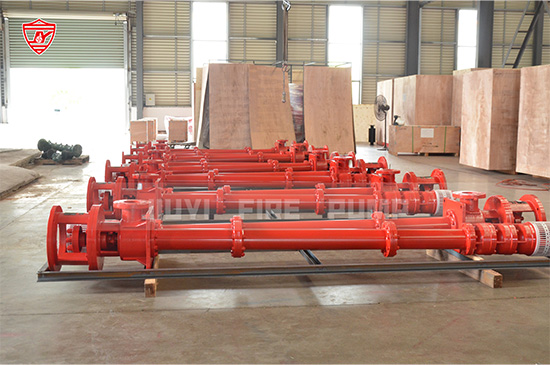Priming a vertical pump, especially a vertical turbine fire pump, is one of the most crucial steps to ensure reliable operation in fire protection systems. Without proper priming, the pump may fail to deliver the required water pressure during an emergency, which can lead to catastrophic consequences.
In this article, we will provide a comprehensive, step-by-step guide on how to prime a vertical pump, explain common mistakes to avoid, and share maintenance tips to ensure long-term pump efficiency. As a fire pump manufacturer with extensive experience, we will focus on vertical turbine pumps used in firefighting applications, but many of these practices also apply to other vertical pump types.

Before we dive into the procedure, it’s important to understand what “priming” means.
Priming is the process of filling the pump casing and suction line with liquid before starting the pump. For vertical turbine pumps, which are commonly used in fire protection systems, priming ensures:
Water is available at the impeller before startup.
The pump avoids air binding and cavitation.
Smooth, efficient, and safe pump operation.
Unlike horizontal pumps, vertical turbine pumps are partially submerged in a water source, such as a tank, reservoir, or underground well. In most cases, these pumps are self-priming because the impellers are located below the water level. However, improper installation, maintenance, or operation can still lead to priming failures.
Although vertical pumps often operate below the waterline, priming is still necessary in several situations:
First-time installation: When a new pump is installed, air pockets may be present.
Post-maintenance startup: After replacing bearings, seals, or bowls, trapped air must be removed.
Seasonal or prolonged shutdowns: If the pump has been idle for months, priming ensures water fills the lines before restarting.
Emergency restart after draining: Following system testing or tank cleaning, the suction lines may be empty.
Failing to prime a vertical pump correctly can cause:
Excessive vibration and noise
Reduced discharge pressure
Overheating and bearing damage
Premature seal failure
Complete pump breakdown
Before starting the priming process, gather the necessary tools and perform initial checks:
Pressure gauge
Vent valves
Clean water source
Wrenches and basic tools
Personal protective equipment (PPE)
Inspect the Pump Bowl Assembly
Ensure the pump bowls are fully submerged in the water source.
Check for blockages or debris around the intake screens.
Verify Suction Valve Positions
Keep the suction valves open before priming to allow water to enter freely.
Check Discharge Line Valves
Partially close the discharge valve to minimize system pressure during priming.
Inspect Bearings and Lubrication
Make sure line-shaft bearings are properly lubricated according to the manufacturer’s guidelines.

Here’s the detailed process for priming a vertical turbine fire pump:
Ensure the pump bowl assembly is completely submerged in water. If the water level is too low, the impellers may draw in air, making priming impossible.
Most vertical turbine pumps are equipped with a vent valve on the discharge head. Open this valve to allow trapped air to escape as water fills the column pipe.
If the pump is installed above the water source or includes long suction piping, manually fill the column pipe with clean water until it reaches the discharge head.
As the column pipe fills, monitor the pressure gauge on the discharge head. A steady increase in pressure indicates proper filling and reduced air content.
Once water begins to flow steadily from the vent valve without air bubbles, close the valve tightly.
Start the pump at a low speed (if your system allows) to prevent sudden pressure surges. Observe for abnormal vibration or noise during startup.
Once the pump reaches its rated speed, slowly open the discharge valve to allow water to flow into the system. Avoid opening the valve too quickly, as this may cause cavitation.
Even with the correct procedure, problems can arise during priming. Here are common issues and solutions:
Cause: Air trapped in the column pipe prevents water from reaching the impellers.
Solution: Reopen the vent valve and ensure all air is released before restarting.
Cause: The pump bowls are not submerged.
Solution: Raise the water level or lower the pump setting to ensure full submersion.
Cause: Worn-out bearings or seals may allow air infiltration.
Solution: Inspect and replace faulty components before reattempting priming.
Cause: Debris around the pump bowl intake can restrict water flow.
Solution: Clean the screens regularly to maintain unrestricted water supply.
To ensure reliable pump performance, follow these best practices:
Always verify that the pump bowls remain submerged.
Keep the vent valve clean and functional.
Use a pressure gauge to monitor filling progress accurately.
Lubricate line-shaft bearings regularly to reduce friction.
Train operators on proper startup and priming techniques.
Routine maintenance plays a vital role in reducing priming issues:
Inspect Water Source Levels Weekly
Ensure water levels remain above the pump bowl assembly.
Clean Pump Components Regularly
Prevent debris buildup around impellers and suction screens.
Check Vent Valves and Gaskets
Worn-out seals or gaskets can allow air to enter the column pipe.
Schedule Annual Performance Testing
Conduct flow and pressure tests to verify pump efficiency.

Priming a vertical pump, especially a vertical turbine fire pump, is a critical step to ensure your fire protection system operates effectively when needed most. By following the step-by-step priming process, performing regular maintenance, and training personnel, you can minimize downtime, prevent damage, and guarantee reliable pump performance.
As a leading fire pump manufacturer, we recommend always following the manufacturer's guidelines for your specific pump model. Proper priming protects your investment and ensures safety in critical fire protection applications.